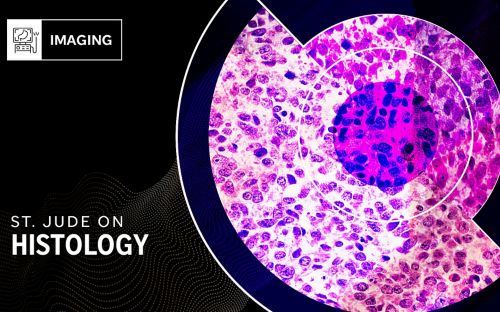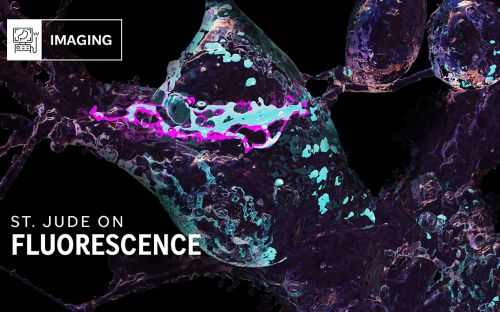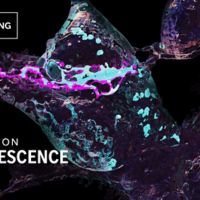Targeted protein degradation to treat cancer

Proteolysis targeting chimeras (PROTACS) are drugs that can degrade, or remove, a protein to treat disease.
Problematic proteins are a major focus of cancer research. Genomic abnormalities that either mutate genes or that modify the ways genes are expressed can ultimately create abnormal proteins that affect cells in myriad ways. This can include helping cells to grow and proliferate uncontrollably – the hallmarks of cancer. Stopping these proteins, either at the genetic level before they are created, or by blocking or removing them from cells is how researchers can treat cancer. However, doing this effectively has many challenges.
Targeted therapies that lock onto a specific genetic defect have generated tremendous excitement across a wide variety of cancers – particularly in aggressive cancers with limited treatment options. However, the often-dramatic responses that these therapies can generate may not be long-lasting. Resistance, where the cancer cell finds a way to circumvent the specific effect of the treatment is a problem that has plagued the field of targeted therapies.
Additionally, proteins interact within cells and may have many different roles. As a result, figuring out exactly which function of which proteins are the problem, and whether they can be removed is a significant challenge within the complex cellular network.
What scientists need is the ability to precisely remove a problematic protein from a cell like a surgeon wielding a scalpel – removing the aberrant proteins while leaving the rest of the cell intact. Scientists at St. Jude are leveraging the latest chemical technology to degrade proteins in a targeted way, thereby removing them from a cell.
Called proteolysis targeting chimeras (PROTACs) these drugs work through a targeting mechanism that brings the protein target close to an E3 ubiquitin ligase, which marks the protein target for destruction like a construction worker using spray paint to mark a building for the wrecking ball. The targeted protein is then degraded by the cells natural machinery for disposing of unneeded proteins (think of it like the cells garbage disposal).
This elegant solution to difficult to target proteins in cancer has been used in the clinic to treat a cancer in adults called multiple myeloma for many years – although the fact that it works as a PROTAC wasn’t appreciated at the time. Thalidomide is an effective treatment for multiple myeloma, but in 2015 scientists gained a deeper appreciation for the drug when it was revealed as a degrader of the target IKZF1. This realization led to an explosion of interest in the field of targeted protein degradation. This therapeutic approach is gaining traction in pediatrics, with St. Jude scientists pioneering research in childhood leukemia and solid tumors.
LCK targeted PROTAC for high-risk leukemia
More-effective therapies are greatly needed for children with the high-risk blood cancer T-cell acute lymphoblastic leukemia (T-ALL). Previous research led by co-corresponding author Jun J. Yang, PhD, St. Jude Departments of Pharmacy and Pharmaceutical Sciences and Oncology, revealed that the protein LCK is an important drug target in 44% of children with T-ALL. That work, published in Nature Cancer demonstrated the feasibility of therapeutically targeting LCK using the drug dasatinib. Unfortunately, cancer cells treated with dasatinib sometimes develop resistance. To address this problem, the scientists developed a PROTAC against LCK, and published their results in Science Translational Medicine.
“Designing small-molecule inhibitors of a protein is like jamming a lock with a key,” Yang said. “It works well when it stays exactly right, but if the drug comes off, the protein will resume its normal function. The PROTAC approach is different. Rather than block the protein target, you’ve blown it up so that it isn’t there anymore.”
Co-corresponding author Zoran Rankovic, PhD, St. Jude Department of Chemical Biology & Therapeutics, used a novel E3 ligase-directing motif called phenyl glutarimide to develop the St. Jude LCK-PROTAC SJ11646. This motif proved superior to other E3-directing molecules commonly used in PROTAC design. The researchers previously published the development of phenyl glutarimide in Angewandte Chemie.
Yang, Rankovic and their colleagues showed that SJ11646 effectively eliminates the LCK protein, thereby killing LCK-activated T-ALL. Their work provides a blueprint for developing additional degradation-based therapeutics.
Targeting EP300 in neuroblastoma
Researchers are also developing PROTACs for use against solid tumors such as neuroblastoma. Scientists at St. Jude and Dana-Farber Cancer Institute developed a compound that degrades EP300, an enzyme that pediatric neuroblastoma cells need to survive. The findings, published in Cancer Discovery, demonstrate how powerful the PROTAC approach can be for difficult to treat malignancies.
As with many other pediatric cancers, neuroblastoma does not have a clear genomic target that's easy to drug so the researchers cast a wider net – and identified 147 candidate genes that neuroblastoma requires. They mapped the connections between these genetic dependencies to figure out which nodes in the network were of the greatest importance. Their research led them to EP300, which was heavily linked to many of the genes and associated proteins that neuroblastoma needs to grow.
The enzymes EP300 and CBP regulate gene expression and play somewhat overlapping roles in normal cells. However, many neuroblastoma cells only need EP300. Existing compounds that target EP300 suffer from toxicity because they target both EP300 and CBP. Healthy cells typically need one or the other to survive. So, the scientists made a PROTAC to target EP300 exclusively.
“I think of PROTACs like going fishing. On the end of your fishing rod is a hook which attaches to your target, which for us is EP300,” said first and co-corresponding author Adam Durbin, MD, PhD, St. Jude Division of Molecular Oncology, Department of Oncology. “Our compound, “JQAD1,” hooks EP300 and reels it into the cells normal protein degradation system, like dragging it to the trash.”
JQAD1 treatment destroys EP300, which causes loss of the critical enhancers that drive neuroblastoma growth, leading to rapid neuroblastoma cell death without the toxicity concerns that plagued existing compounds. This is likely due to the compound having only minor effects on CBP, which is left behind in normal cells.
“In addition to the tremendous clinical potential of this molecule, our findings crack open other mysteries of basic biology highlighting differences between two enzymes previously thought to be redundant,” said author Brian J. Abraham, PhD, St. Jude Department of Computational Biology. “The research also shows how attacking a general process like transcription can have surprising and tolerable therapeutic benefit.”
Sending problematic proteins to the trash
As PROTAC technology continues to advance, scientists at St. Jude will pursue these exciting therapeutics – which provide an important option against difficult to target cancers. Scientists at St. Jude have developed PROTAC technology for a variety of other targets including:
- Taosheng Chen, PhD, St. Jude Department of Chemical Biology and Therapeutics – SJPYT-195 a degrader of GSPT1 published in ACS Medicinal Chemistry Letters.
- Rankovic and Charles Mullighan, MD, MBBS, St. Jude Comprehensive Cancer Center deputy director – a degrader of Janus kinases in CRLF2-rearranged acute lymphoblastic leukemia published in Blood and JAK2/3 directed PROTACs published in ACS Medicinal Chemistry Letters.
Developing new treatments for childhood cancer is going to require creative solutions. At St. Jude, researchers are pushing the boundaries of what is possible by creating and implementing novel PROTACs to degrade problematic proteins and more effectively treat cancer.
“Targeted protein degradation is a novel chemical biology paradigm with great promise for drug discovery,” Rankovic said.
